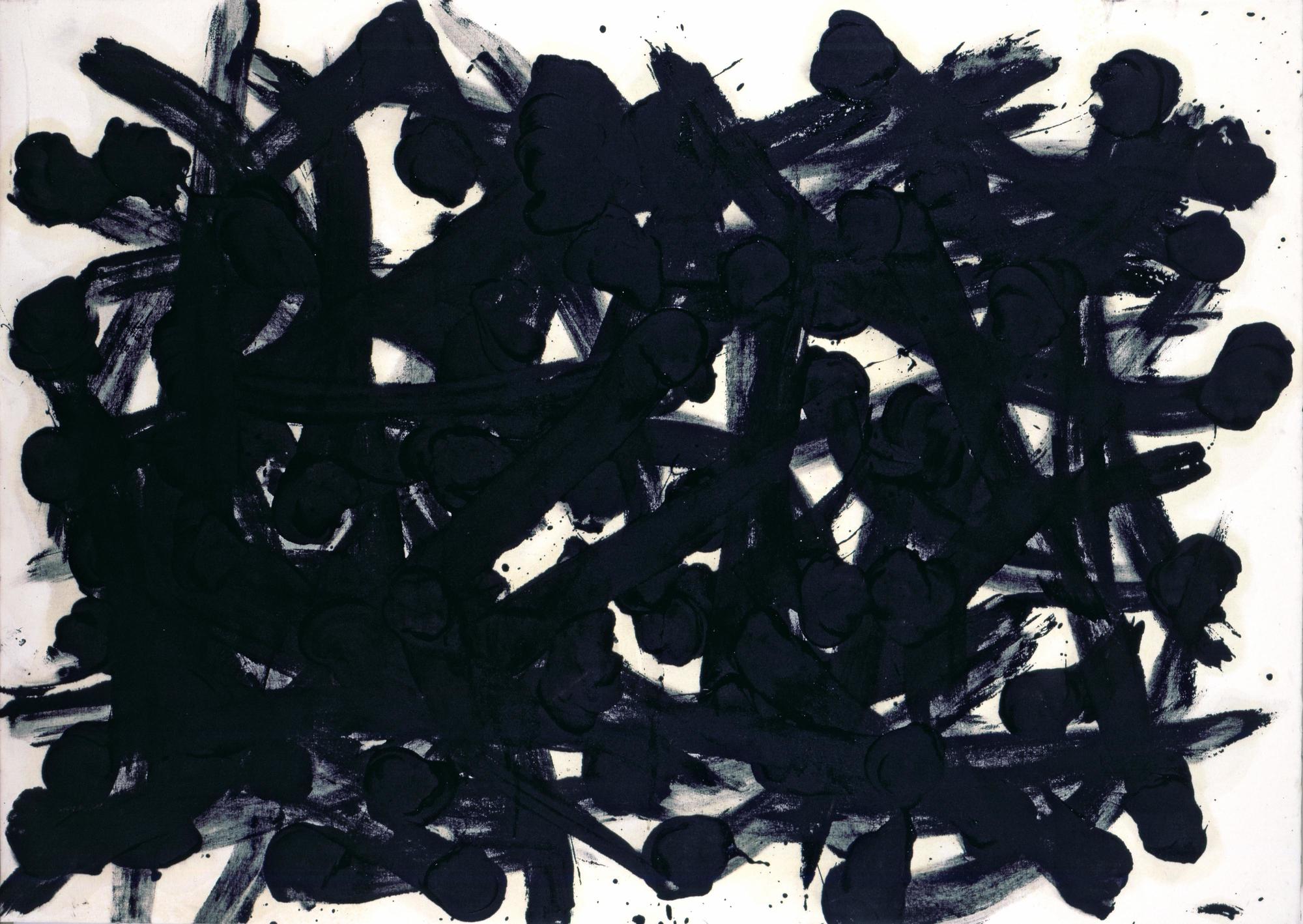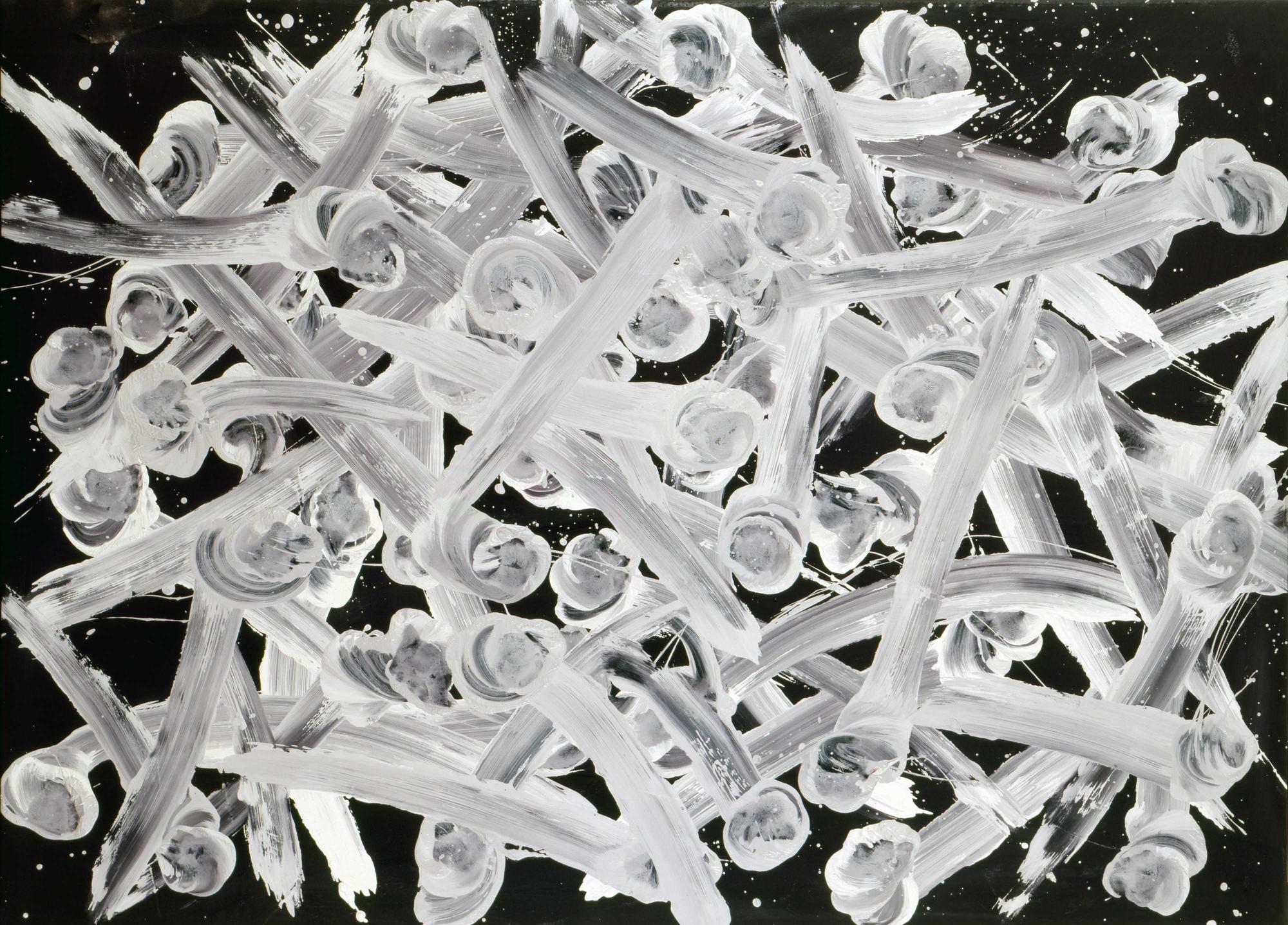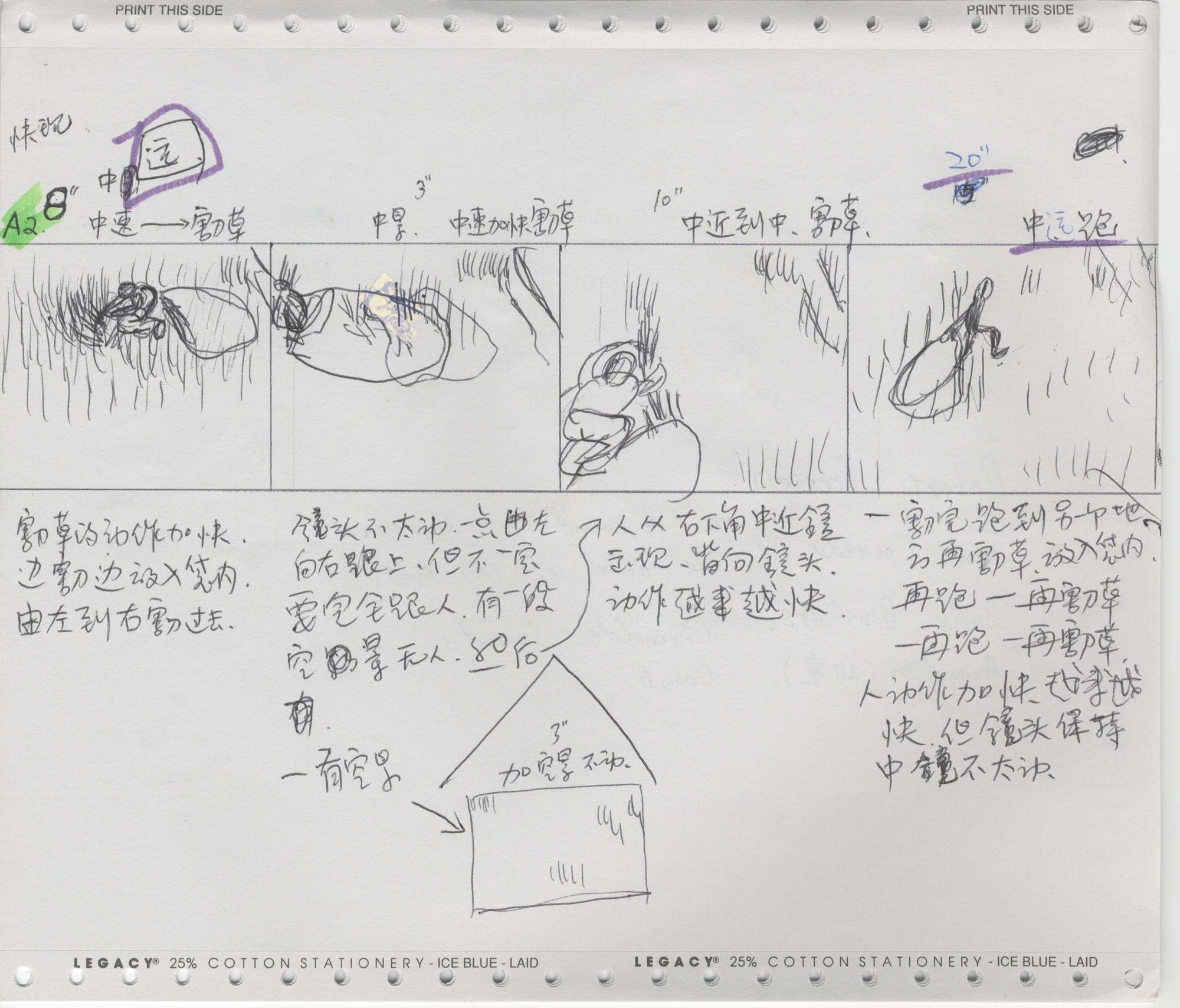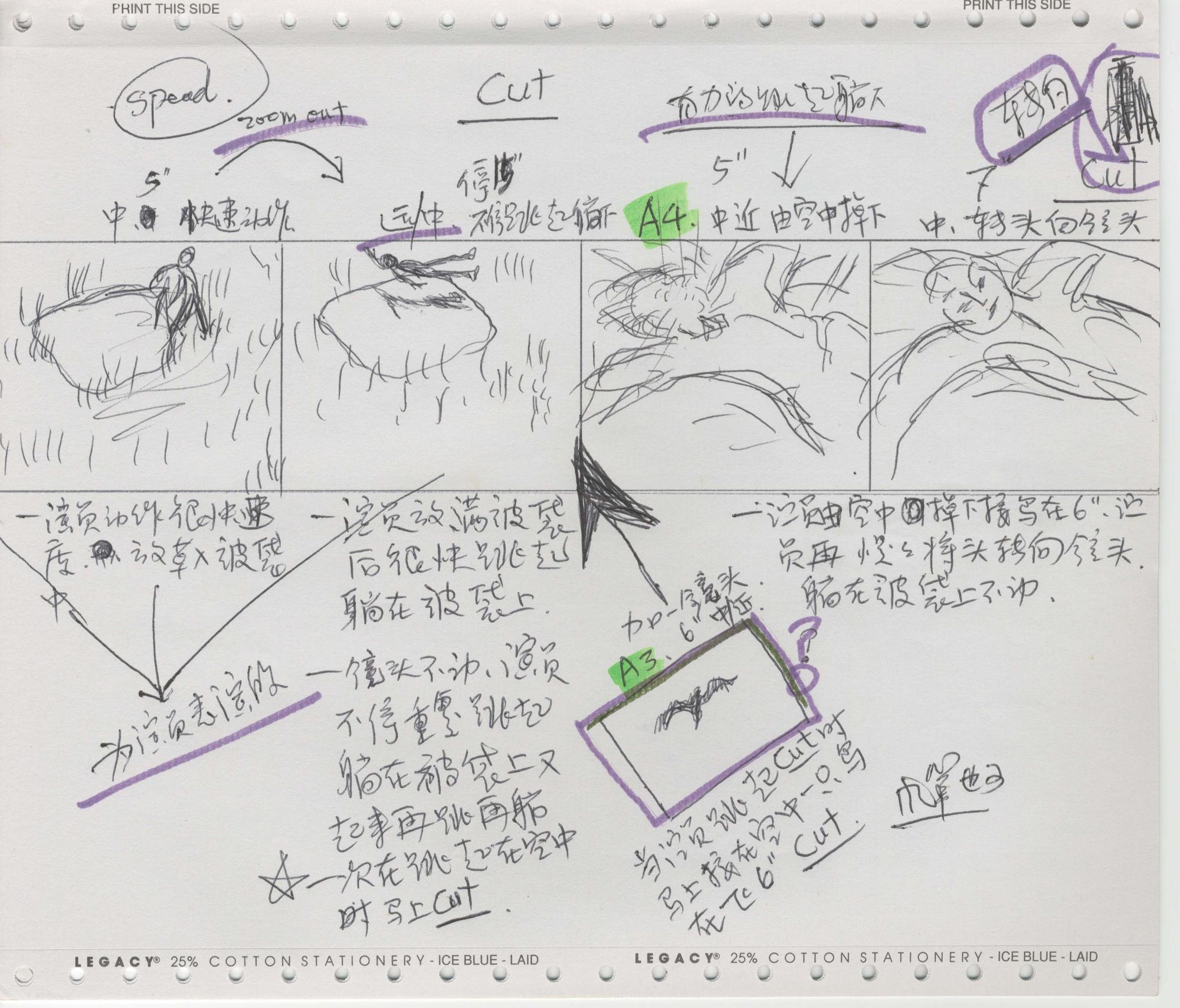Shen Wei: Painting in Motion Gallery Guide
English
Shen Wei: Painting in Motion
Dancer, choreographer, painter, and filmmaker, Shen Wei is a global citizen who synthesizes various art forms to find spiritual meaning in an increasingly material world. His most famous work, Scroll Painting, performed at the 2008 Beijing Olympics, demonstrates the close relationship between visual and performing arts in Shen Wei’s practice. His approach defies cultural and geographical boundaries, offering both a new concept of dance and a way of seeing the world as interconnected. As a painter, Shen Wei uses the monumental scale of the canvas to create visual environments that evoke ancient Chinese landscape paintings while enlisting the drips and gestures of twentieth-century abstraction to forge his own individual style.
Painting in Motion is the first exhibition in the U.S. to present the range of Shen Wei’s artistry, unfolding across several spaces in this building and the historic Palace. The Hostetter Gallery across the hall contains Shen Wei’s recent paintings, including two works he created at the Gardner Museum as an Artist-in-Residence, as well as his sketchbooks and documentation of his choreography. The Fenway Gallery of the Palace serves as a screening room for Shen Wei’s films, featuring a new commission for the Gardner, Passion Spirit. The Anne H. Fitzpatrick Façade on the front of this building reimagines a still image from Passion Spirit.
Shen Wei's art reflects the multidisciplinary nature of the Gardner Museum itself and offers timely themes of mindfulness, spiritual connection, and cultural understanding so urgently needed at this moment. We invite you to take a meditative journey into Shen Wei's other worlds and dreamscapes by exploring all aspects of this unique exhibition.
Shen Wei: Painting in Motion is supported by the E. Rhodes and Leona B. Carpenter Foundation and members of the Friends of Fenway Court Patron Program. Support for Shen Wei's Residency and the Artist-in-Residence program has been provided by The Andrew W. Mellon Foundation, the National Endowment for the Arts, and the Barbara Lee Program Fund. Community programs created in partnership with the Pao Arts Center and Chinese Folk Art Workshop are made possible by the National Endowment for the Arts and Barr Foundation ArtsAmplified initiative. The Museum receives operating support from the Massachusetts Cultural Council.
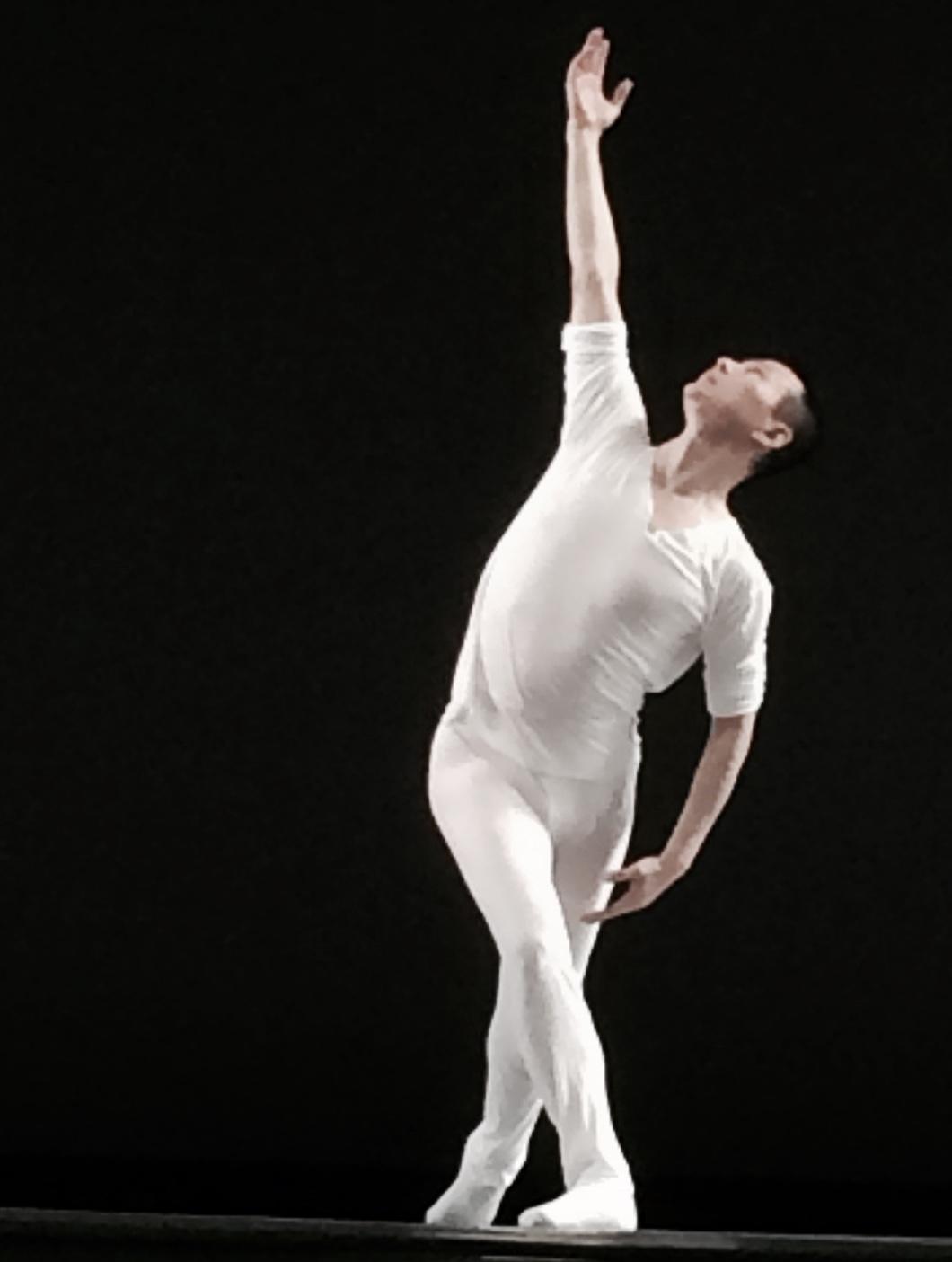
Shen Wei performing in Variations, 2014
Variations, 2014
7:04 minutes
Choreographer and Performer: Shen Wei
Variations was commissioned by Celia and Silas Chou and the American Dance Festival with support from the Doris Duke/SHS Foundations Award for New Dance. Additional support provided by the Asian/Pacific Studies Institute, Duke University. Variations was filmed at the American Dance Festival with a generous gift from the Scripps Family.
#ISGMShenWei
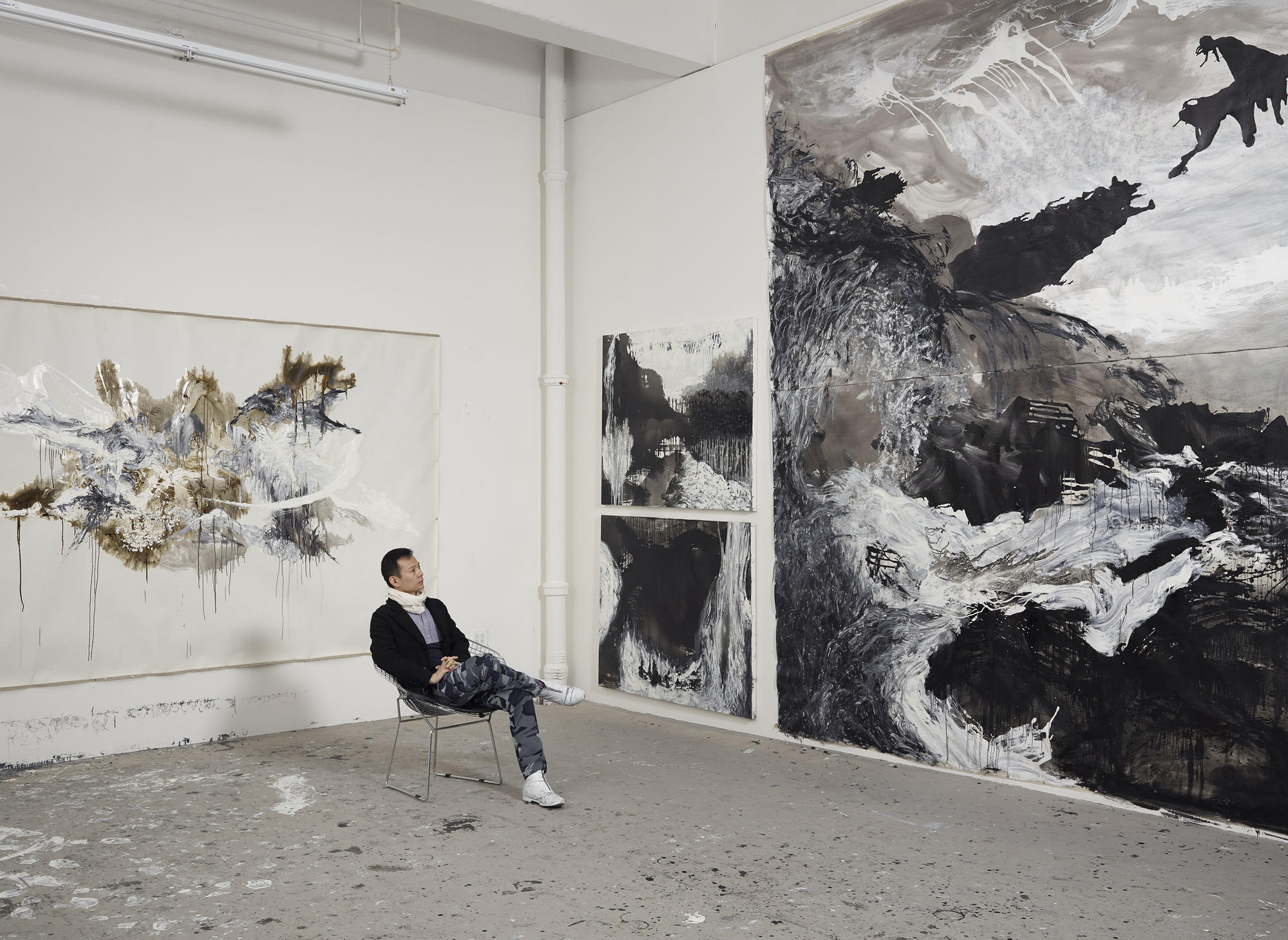
The artist in his New York studio, 2014. Photo © Jeffrey Sturges.
I am made of Eastern and Western ingredients. Now wherever I work or live, I bring, express, and share this conjunction of states of being.
Born in Hunan in 1968, Shen Wei grew up during the political and social upheaval of the Cultural Revolution (1966–76) in China. He began formal opera training in 1978 at age nine. Involving dance, acrobatics, voice, and acting, Chinese opera was Shen Wei’s earliest experience in multidisciplinary approaches.
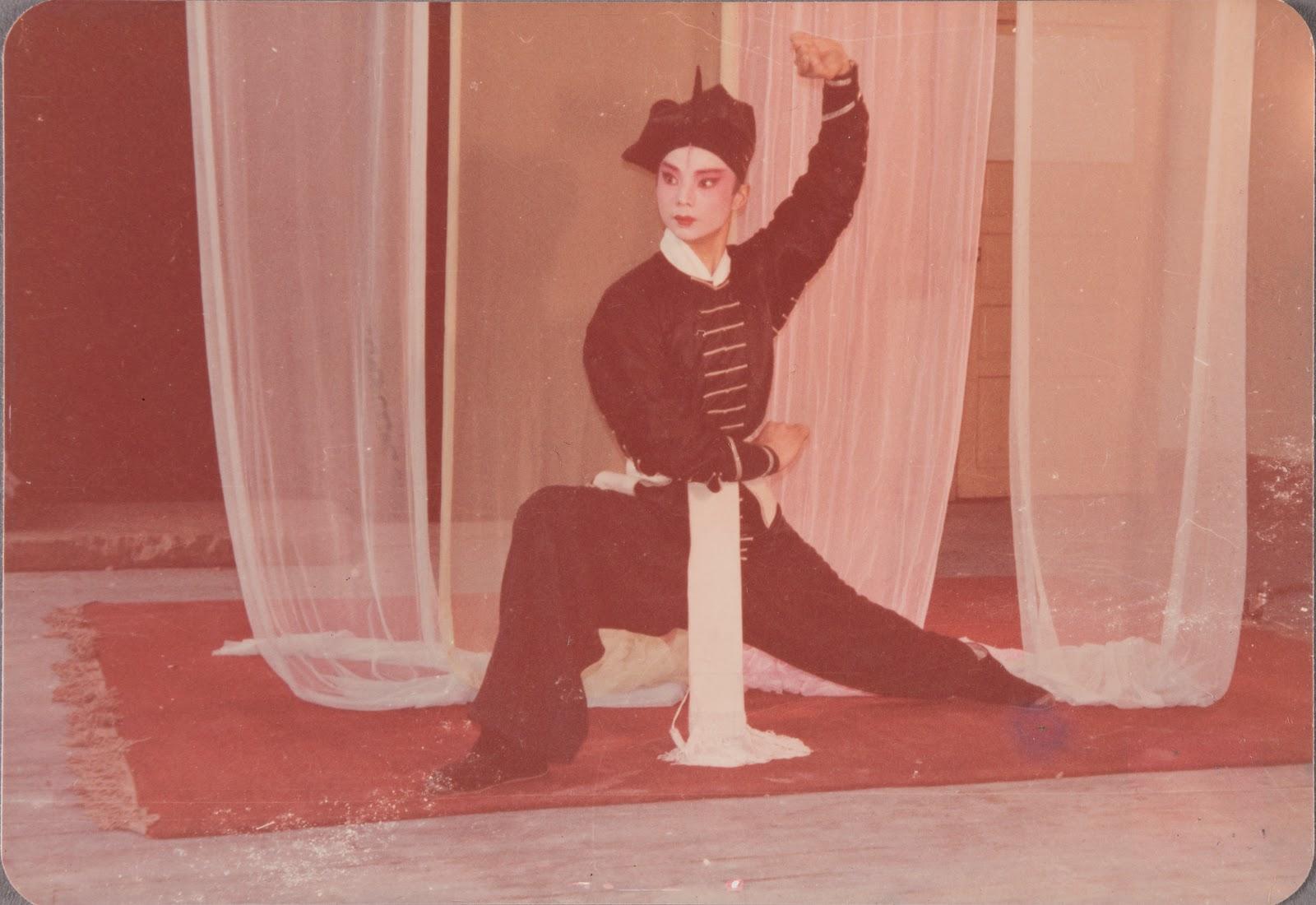
Shen Wei performing as a young opera student. Photo copyright Shen Wei Dance Arts
Following a tour of China performing with the Hunan Opera, Shen Wei received a scholarship to the Guangdong Modern Dance Academy in 1989 and, shortly after graduating, he cofounded the first modern dance company in China. During these early years, he simultaneously pursued a solitary, intense practice of painting.
Shen Wei moved to Brooklyn in 1995 for a scholarship at the Nikolais/Louis Foundation for Dance and immersed himself in the cultural life of New York City. He soon turned his attention to film and worked in several media throughout the 1990s.
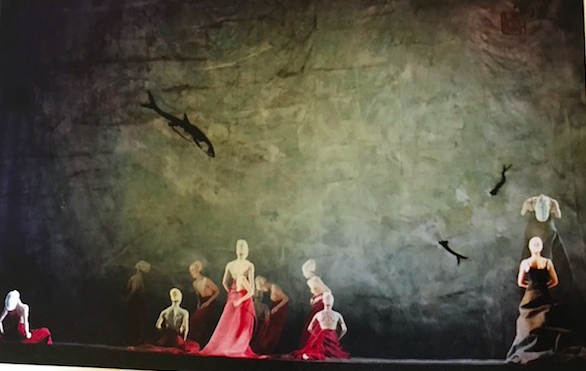
Folding, 2000, performance at the Lincoln Center Festival, 2003.
Photo © Stephanie Berger
Expanding into directing and stage production, Shen Wei founded Shen Wei Dance Arts in 2000. His paintings and theories of dance began to merge during this period. He was awarded a MacArthur Fellowship in 2007 for his innovative work and gained world fame with his choreography for the opening ceremonies of the Beijing Olympic Games in 2008.
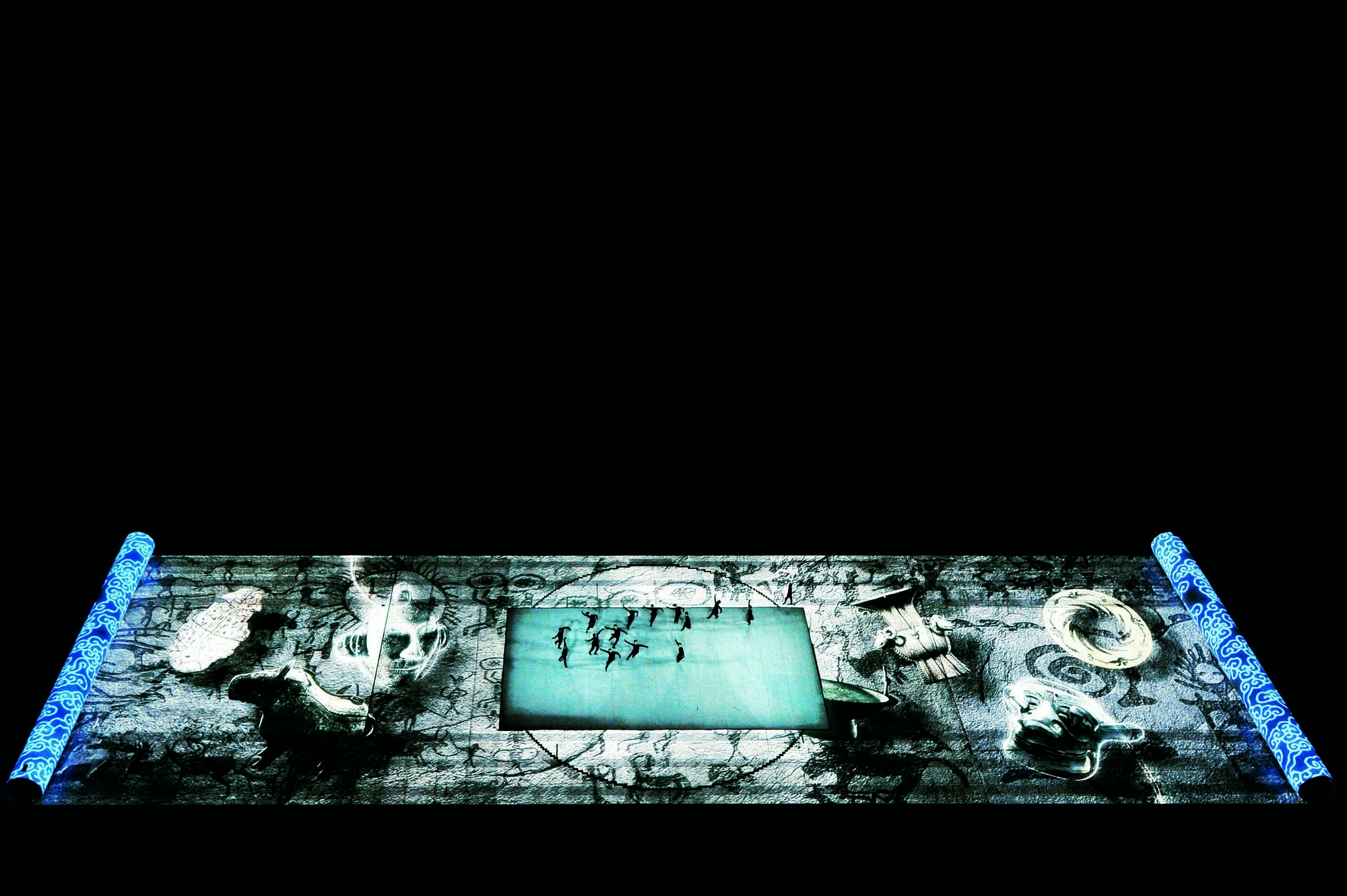
Beijing Olympics: Scroll Painting, 2008
Photo © Lin Yi
Over the past decade, Shen Wei has continued to move fluidly between painting, music, film, and dance with performative installations, abstract paintings, and multimedia dance productions. He explored these practices as an Artist-in-Residence at the Isabella Stewart Gardner Museum during the summer months of 2018 and 2019. Today, Shen Wei lives and works in Paris.
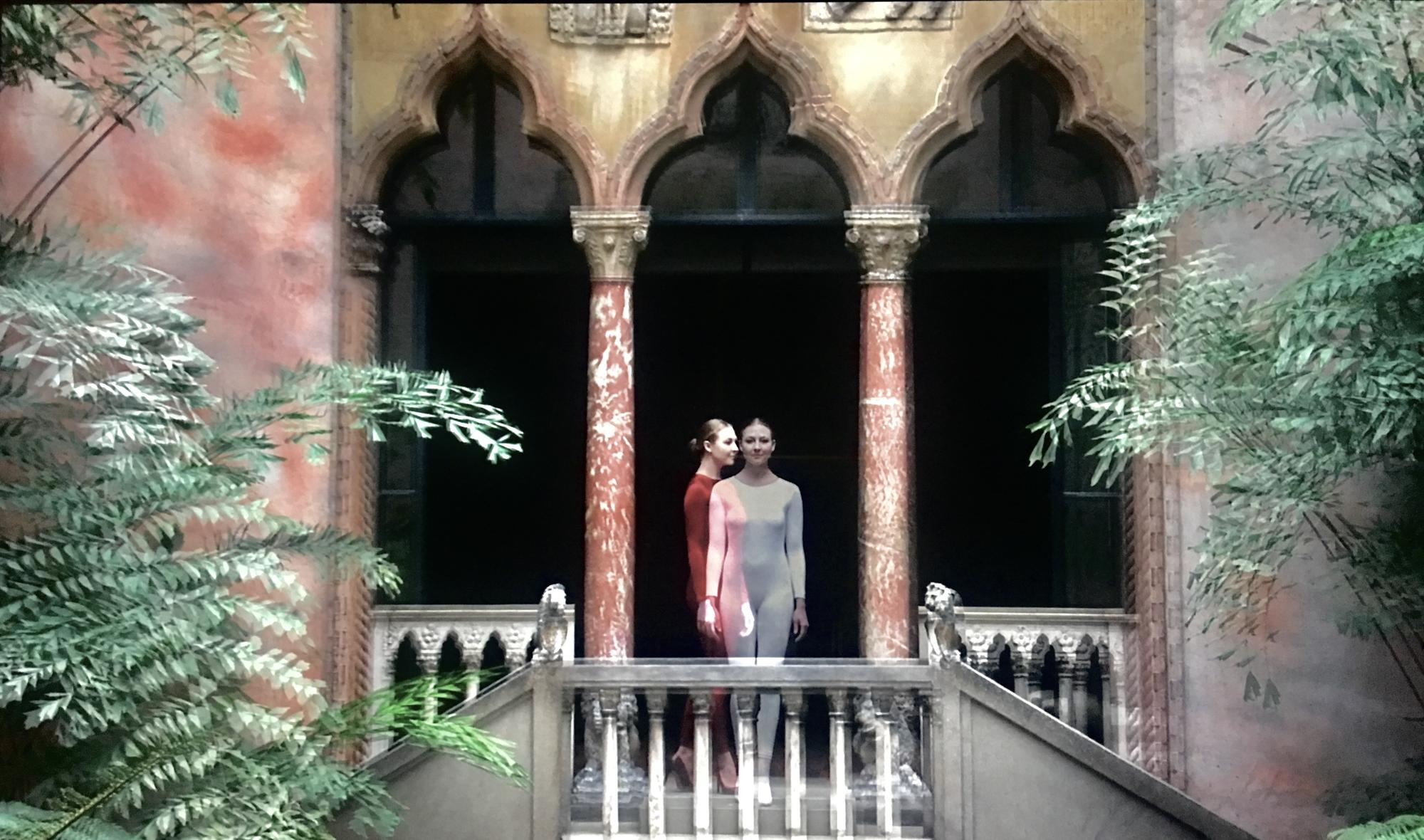
Passion Spirit, 2020
Photo © Shen Wei
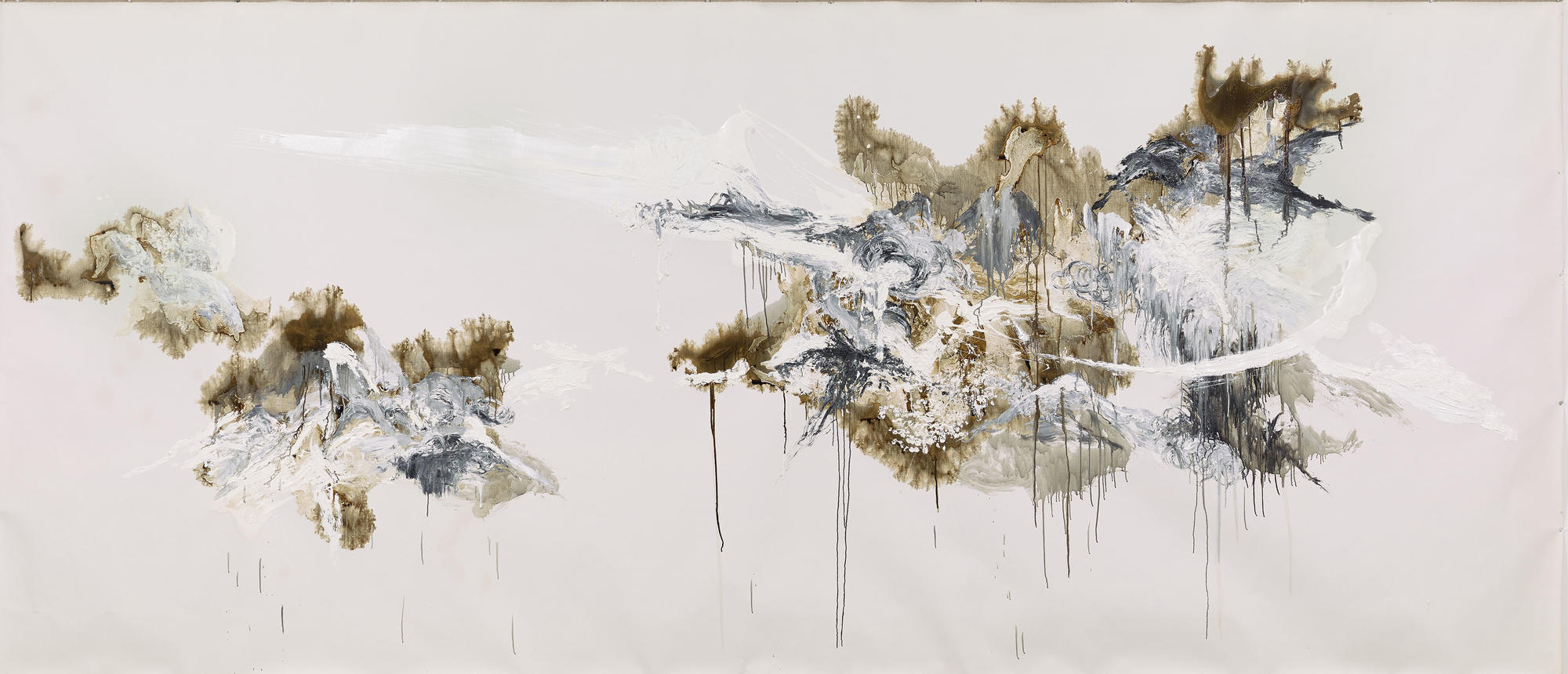
Shen Wei, Untitled Number 6, 2013
Oil and acrylic on linen canvas
83 ½ x 192 7/8 in. (212 x 490 cm)
Photo: Inès Leroy Galan
© Shen Wei
Shen Wei uses the interaction of different painting materials—oil, acrylic, and ink—and techniques—brushstrokes and drips—to create shifting forms that evoke natural elements. The blank space between the mountainous forms provides a tranquil pause. It also causes us to question what we are seeing—is this a distant landscape viewed through clouds or the twisting body of some mythical being?
The Untitled series continues in the next gallery.

Shen Wei, Untitled Number 11, 2013
Oil and acrylic on wood 29 7/8 x 119 7/8 in. (76 x 304.5 cm)
© Shen Wei
This painting, with its oblong format, seems to unfold horizontally like a Chinese scroll, progressing from dark to light and back again. While the scumble of white brushstrokes may suggest a river, the composition defies a specific interpretation beyond the emotional effects of the cavernous blacks offset by the burst of white.
The Untitled series continues in the next gallery.
These two paintings reveal Shen Wei’s early exploration of the combination of movement and pigment to create abstract compositions. Coating the soles of his feet in oil paint, he recorded his movement on a contrasting background, limiting the palette to black and white. The result is a highly energized image that pushes out against the edges of the canvas.
For his debut film April, Shen Wei created a scroll-like storyboard drawing of the film’s scenes. The film begins and ends with a man moving slowly through a desolate landscape as if in a dream.
Open the drawers below to explore materials related to Shen Wei’s process.
The Museum is committed to the safety of all our visitors and is regularly cleaning and disinfecting surfaces, including these drawers.
For more information, visit isgm.org/welcome
Chinese Opera Drawer
Starting in 1978 at the age of nine, Shen Wei began his formal training in Chinese opera. At fourteen years old, he created a notebook on body movements with detailed notation drawings. Chinese opera continued to inspire him later in his career, as seen in the production of Second Visit to the Empress, which combines Chinese opera with modern dance.
Early Painting and Drawing Drawer
In his early years, Shen Wei studied traditional Chinese calligraphy and watercolor and developed a life-long passion for painting. Visual imagery from Western art history began to enter into Shen Wei’s paintings in 1984. These early paintings are mostly figural portraits of his artist friends.
Dream Drawer
What is an artist’s notebook? It is an ordinary object that an artist handles every day. It is also a unique record of creativity. Alongside drawings and sketches, Shen Wei records a variety of notes and diaristic fragments, ranging from descriptions of dreams to poetic impressions.
Film Drawer
In 1998 in New York, Shen Wei turned his attention to film. His first video, April, is a personal exploration of creativity and solitude. Inner Shadow of Movement is a dreamlike journey through architecture. Passion Spirit was commissioned by the Isabella Stewart Gardner Museum. On the left, a sketch from Passion Spirit, commissioned by the Isabella Stewart Gardner Museum, shows his sequencing and outdoor staging for the film.
Shen Wei’s films are screening in the Fenway Gallery in the Palace.
Olympic Drawer
Scroll Painting was performed at the opening ceremonies of the 2008 Summer Olympic Games in Beijing and viewed by four billion people. This huge, live painting and choreography marked the first time Shen Wei included complex digital media in a dance production. Dancers moved across a gigantic canvas with paint-laden mitts; in one scene, they spiral like a flock of birds before dispersing.
Dance Choreography Drawer
Shen Wei’s choreography derives from many artistic and cultural influences, including Chinese opera, Chinese calligraphy, European and American contemporary painting, Western classical and contemporary music, and the study of Buddhism. His dances are mostly nonnarrative and abstract. Among his major works, with their meticulous staging and revolutionary dance techniques, are Rite of Spring, Contact Transfer, and Folding. The dancers relate to each other in space and time but not emotion. Here, you can find notebooks illustrating how dance, a time-based medium, can be notated on a page.
Dance Technique Drawer
Shen Wei found a new way to teach dance movement, which he calls the Natural Body Development Technique. It centers on a dancer’s natural movement, aligning the internal energy of the body (breath, muscles, joints, blood flow) to external forces (gravity, wind, momentum). It teaches the dancer to develop a body that reacts to and sustains motion from the forces within and around it. Shen Wei sees different forms of energy within the body and in nature as evidence that everything is connected.
Set, Costume and Stage Design Drawer
The path of his growing career shows Shen Wei stepping beyond choreography to embrace directing and stage production. The bulk of Shen Wei’s notebooks after 2000 are in English and center on the dance productions that made him famous, with meticulous staging, lighting, costumes, sets, and revolutionary dance techniques.
Western Opera Drawer
In 2013 Shen Wei produced the opera Carmina Burana by Carl Orff for the San Carlo Theater in Naples, Italy. He directed, choreographed the dances, and designed the entire production: sets, costumes, lighting and video projections. The production was an opportunity to create a synergy between classic operatic song and movement using the visual fluidity of dance. This was not his first venture into Western Lyrical opera. In 2010 he choreographed the dances for Moses in Egypt by Rossini with conductor Riccardo Muti for the Opera Theater in Rome.
Family Pictures and Correspondence Drawer
Shen Wei has spent a large part of his life traveling, from touring China as a child with the opera troupe to performing and directing in over thirty countries with Shen Wei Dance Arts. Travel has reinforced his desire to evolve, to push toward the new and to share his knowledge with others. Photographs, notebooks, and correspondence of many kinds mark his relationships with both his immediate family and his growing extended family of dancers and artists around the world.
Untitled Series
The 2013 Untitled series of paintings launched Shen Wei into a highly productive period of large-scale compositions that combine the mythical landscapes of ancient China with the gestural handling found in twentieth-century abstract art. In these images, Shen Wei explores the darker, primal forces of nature through a limited palette of black, white, and brown and an expressive combination of brushstrokes and drips. He uses the fluidity of the paint to evoke shape-shifting geographies of mountains, waterfalls, or cataclysmic natural events like volcanic eruptions. Small dabs of the brush suggest lone figures, birds, or dragons. The size of these paintings allows us to feel like we are entering a dreamscape that is in constant flux, with no definite end to our visual and spiritual journey.
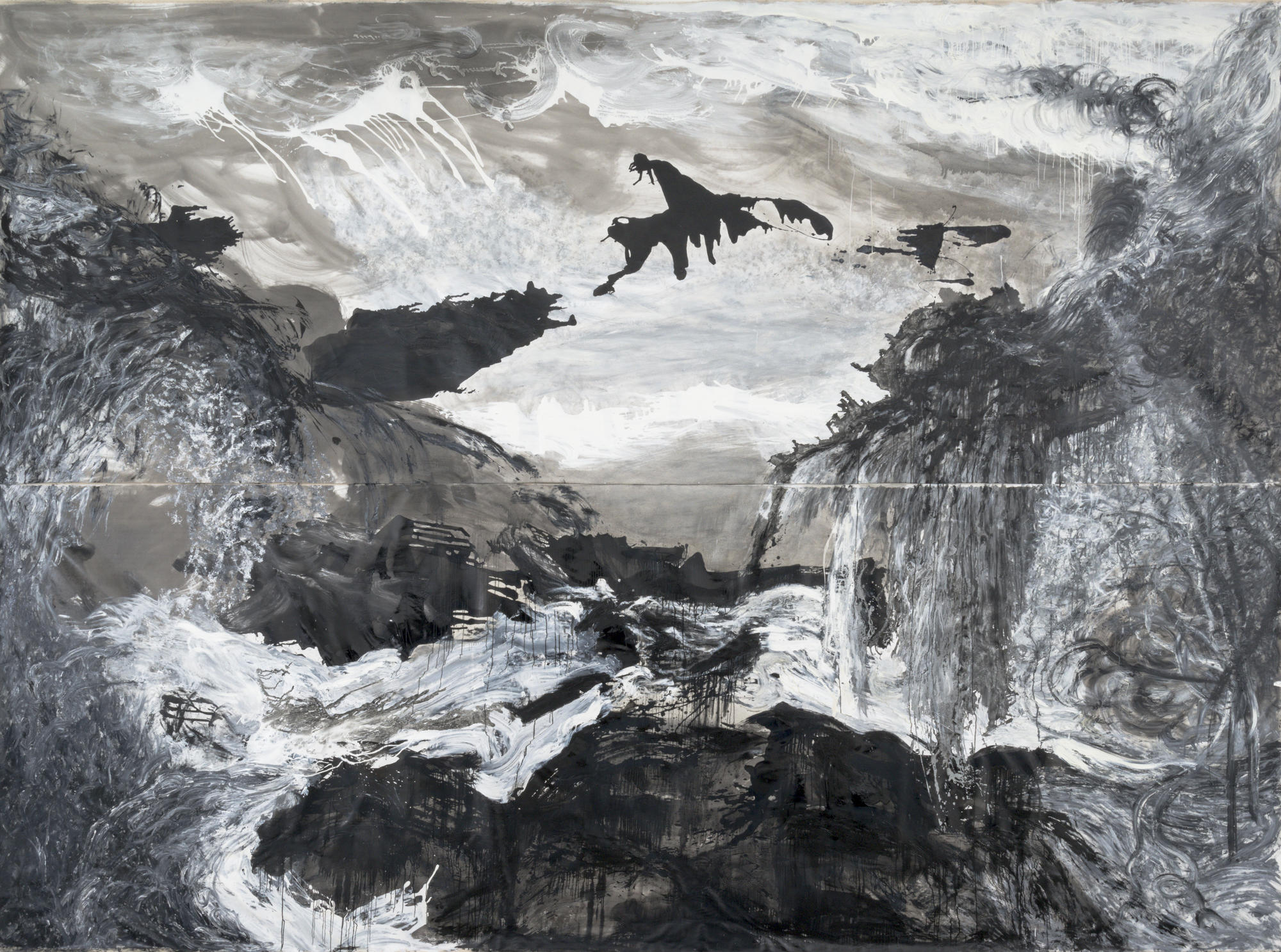
Shen Wei, Untitled Number 8, 2013-2014
Oil and acrylic on linen canvas
165 ⅜ x 218 ⅛ in. (420 x 554 cm)
Private Collection, Spain (Courtesy of Shen Wei)
© Shen Wei
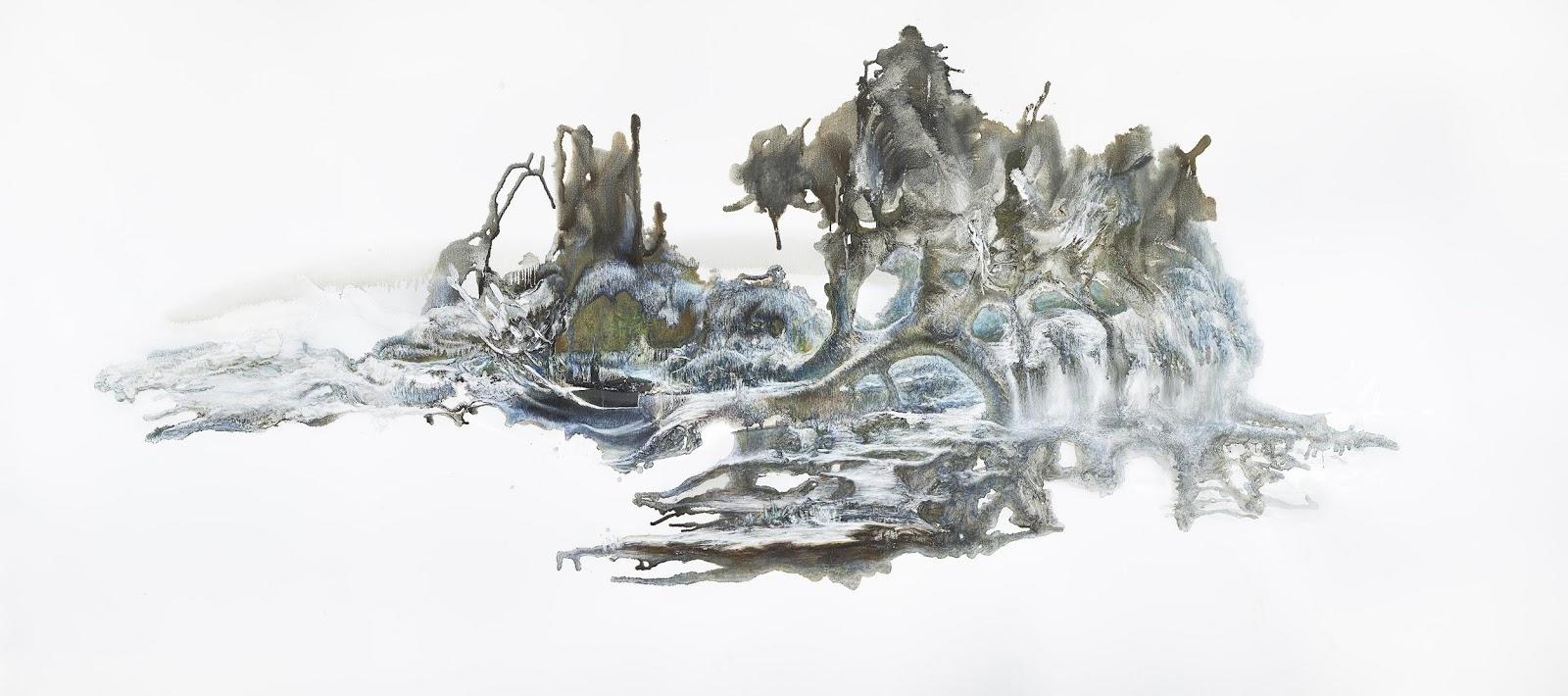
Shen Wei, Untitled Number 31, 2015-2020
Oil and Acrylic on canvas
64 ⅝ x 136 ⅝ in. (164 x 347 cm)
Photo: Inès Leroy Galan
© Shen Wei
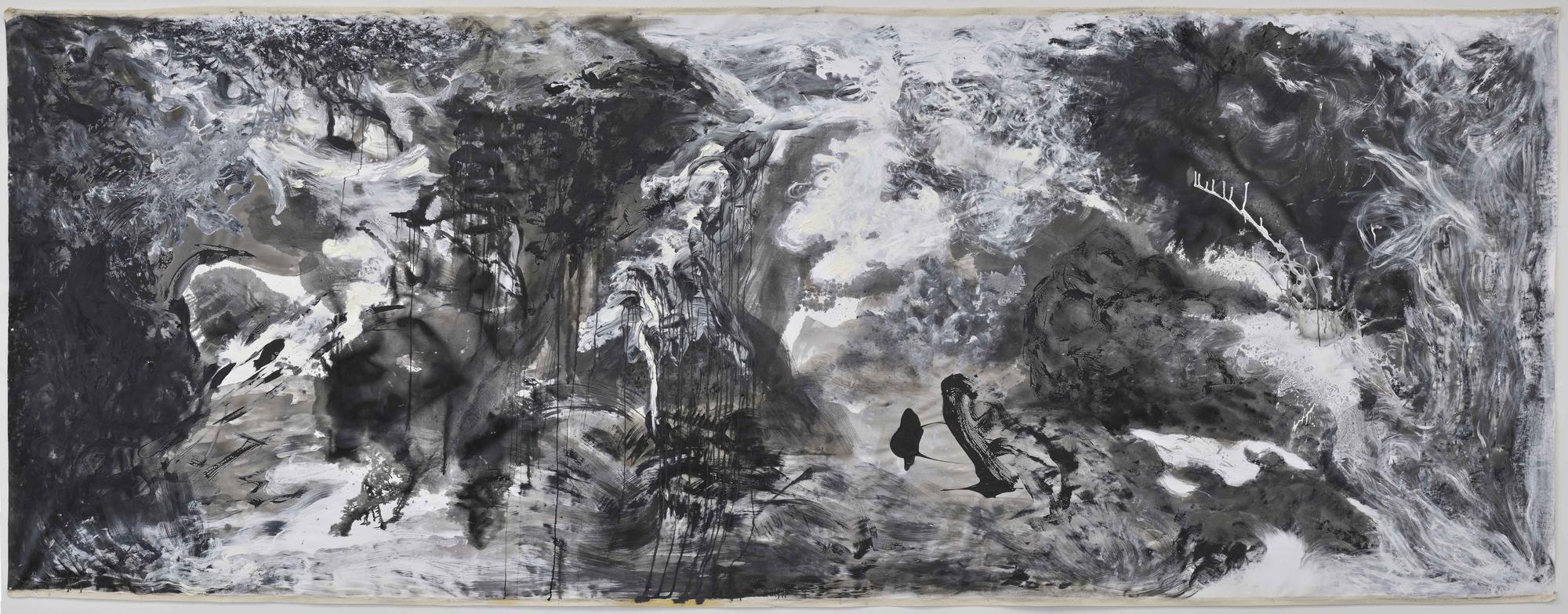
Shen Wei, Untitled Number 1, 2013
Oil and acrylic on linen canvas
82 ⅜ x 211 ⅜ in. (209 x 537 cm)
© Shen Wei
Meditation
Listen to a guided meditation audio experience of Shen Wei’s painting Untitled Number 8.
Led by India Clark, founder of the Wayfinder Institute.
Approximately 10 minutes long.
Suspension in Blue Series
Beginning in 2017, Shen Wei reintroduced color into his painting, using icy blues, aquamarine washes, and pale yellows to create a sense of calm tranquility suspended in time and space. During this period, Shen Wei paused in his work with Shen Wei Dance Arts to devote himself to painting alone in his studio. These concentrated moments of solitude yielded contemplative, ethereal imagery that seems almost weightless. Shen Wei produced the two vertical canvases in this series, Suspension in Blue Numbers 6 and 7, during his residency at the Gardner Museum. Here, blue and white strokes ascend against a colored expanse, as if we are witnessing a celestial transfer of energy.
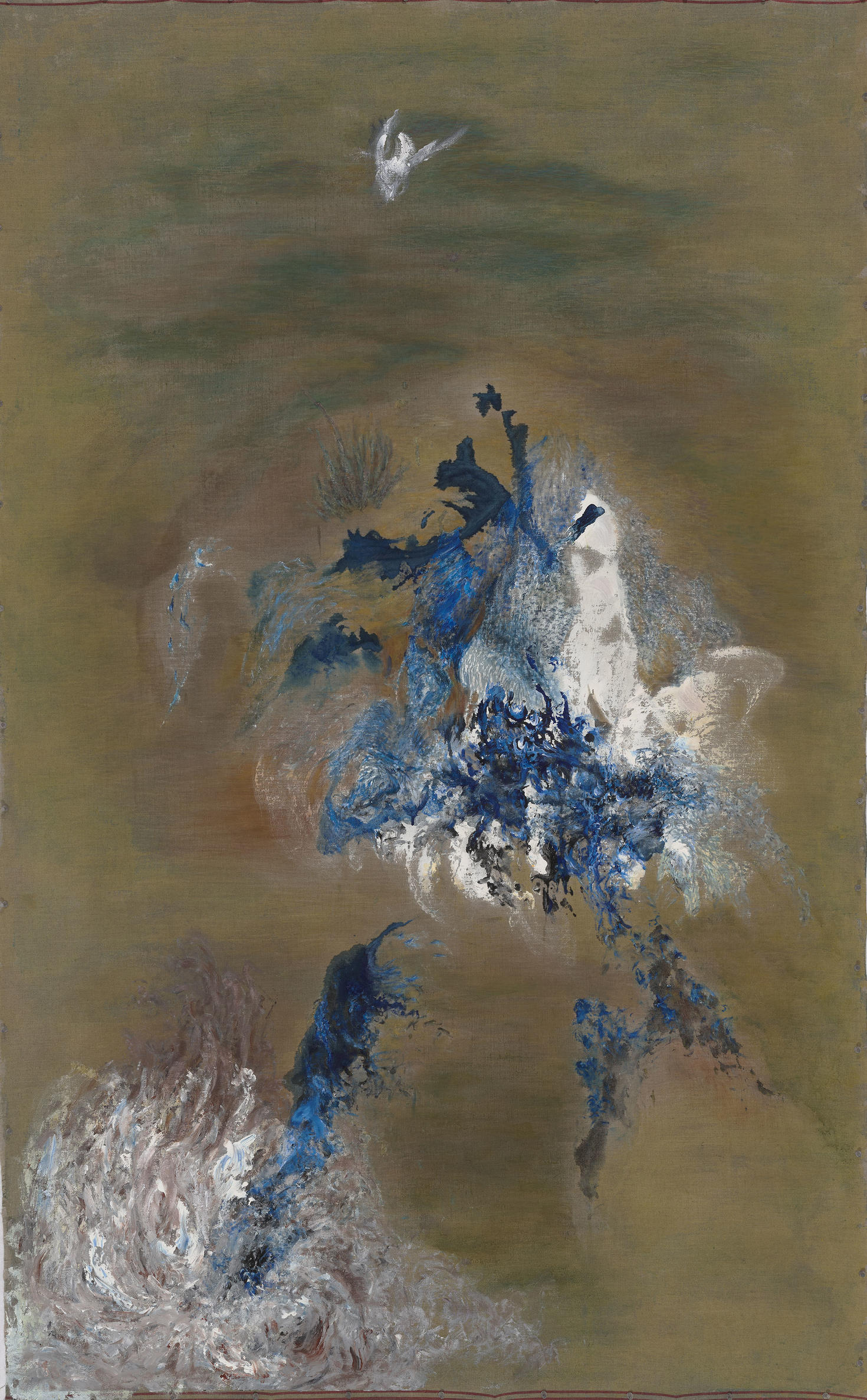
Shen Wei, Suspension in Blue Number 6, 2018
Acrylic on linen
211 x 123 cm (83 x 48 in)
Photo: Stewart Clements
© Shen Wei
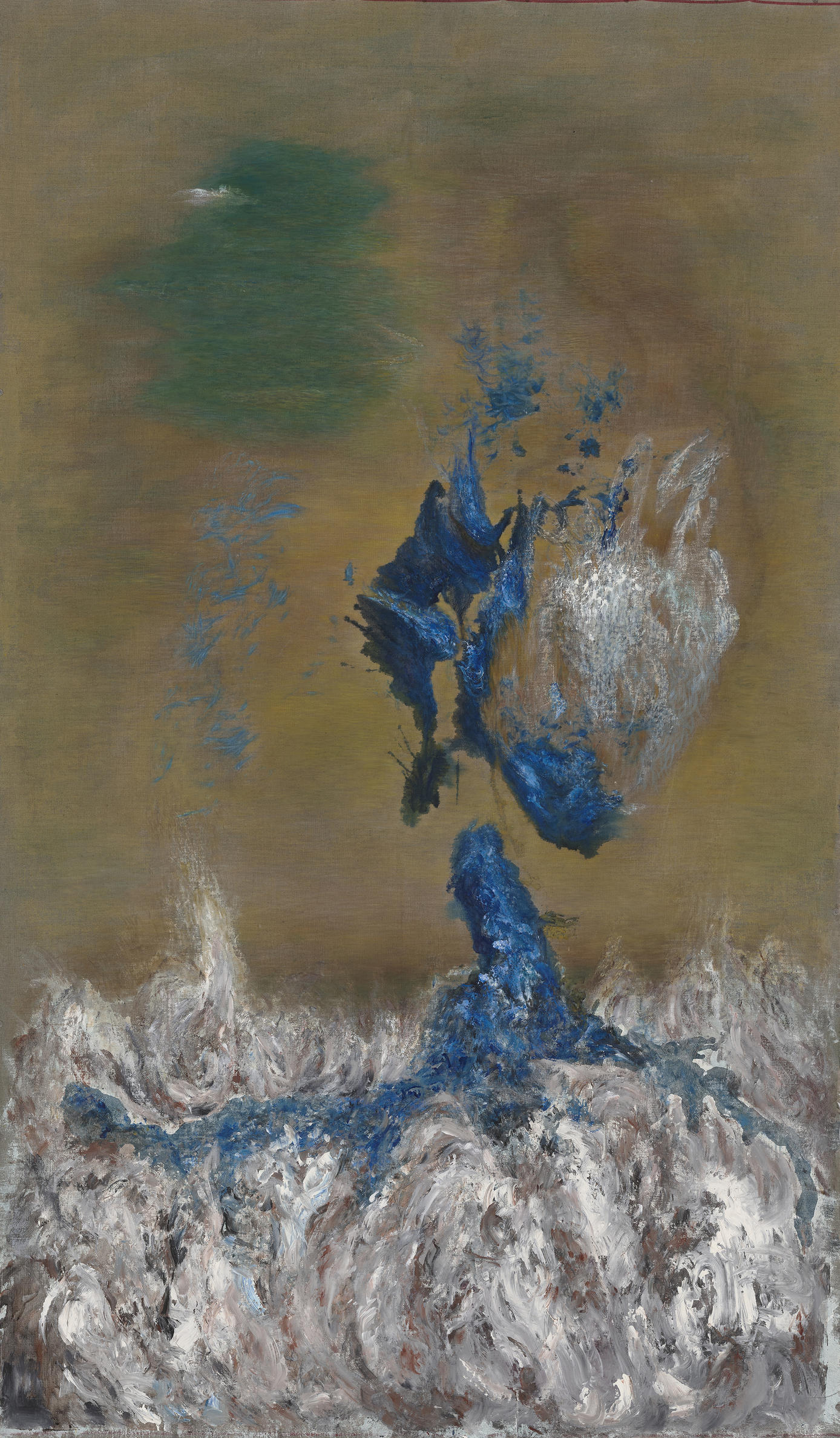
Shen Wei, Suspension in Blue Number 7, 2018
Acrylic on linen
211 x 123 cm (83 x 48 in)
Photo: Stewart Clements
© Shen Wei
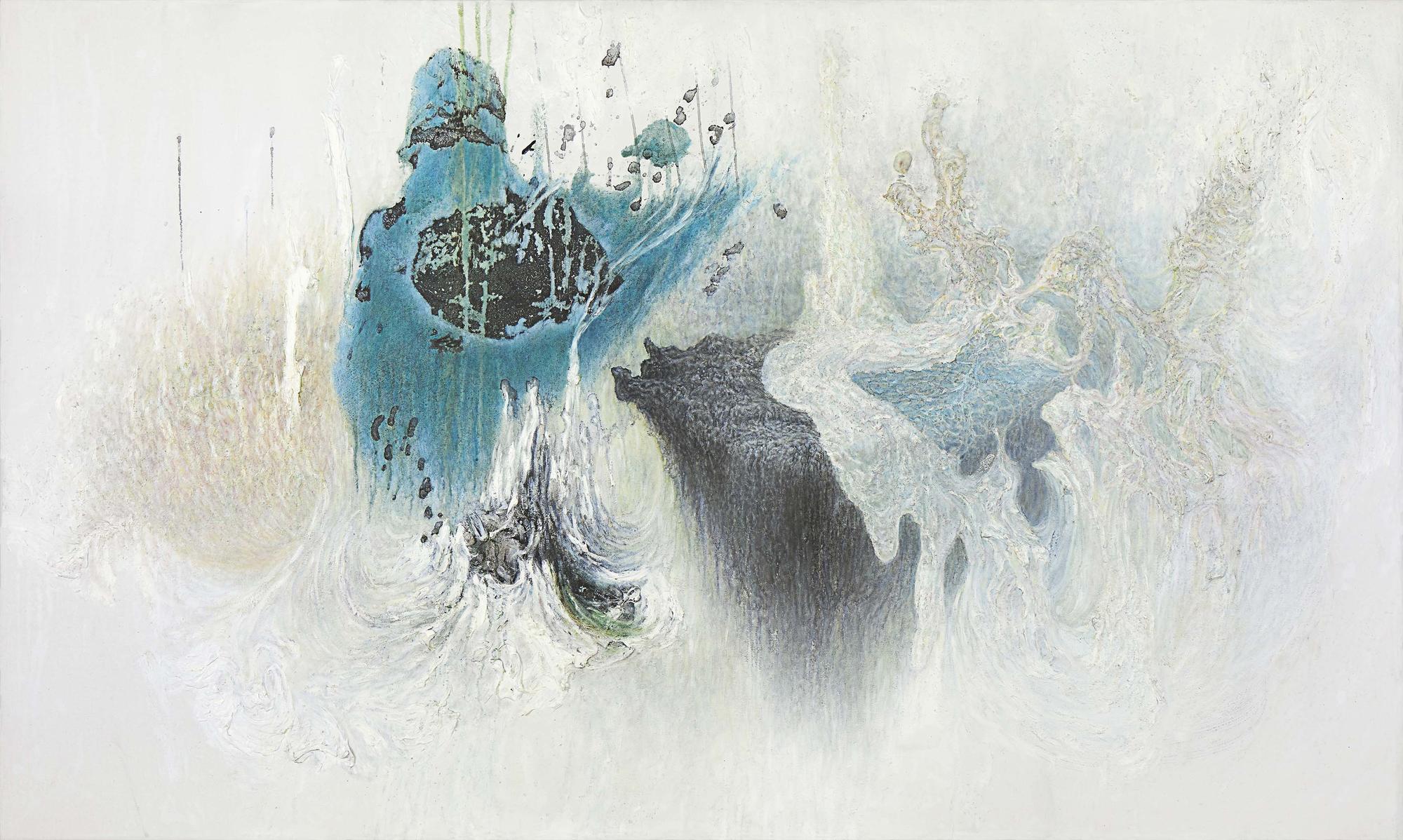
Shen Wei, Suspension in Blue Number 1, 2017-2020
Oil and acrylic on canvas
35 ¾ x 59 ¾ in. (91 x 152 cm)
Photo: Inès Leroy Galan
© Shen Wei
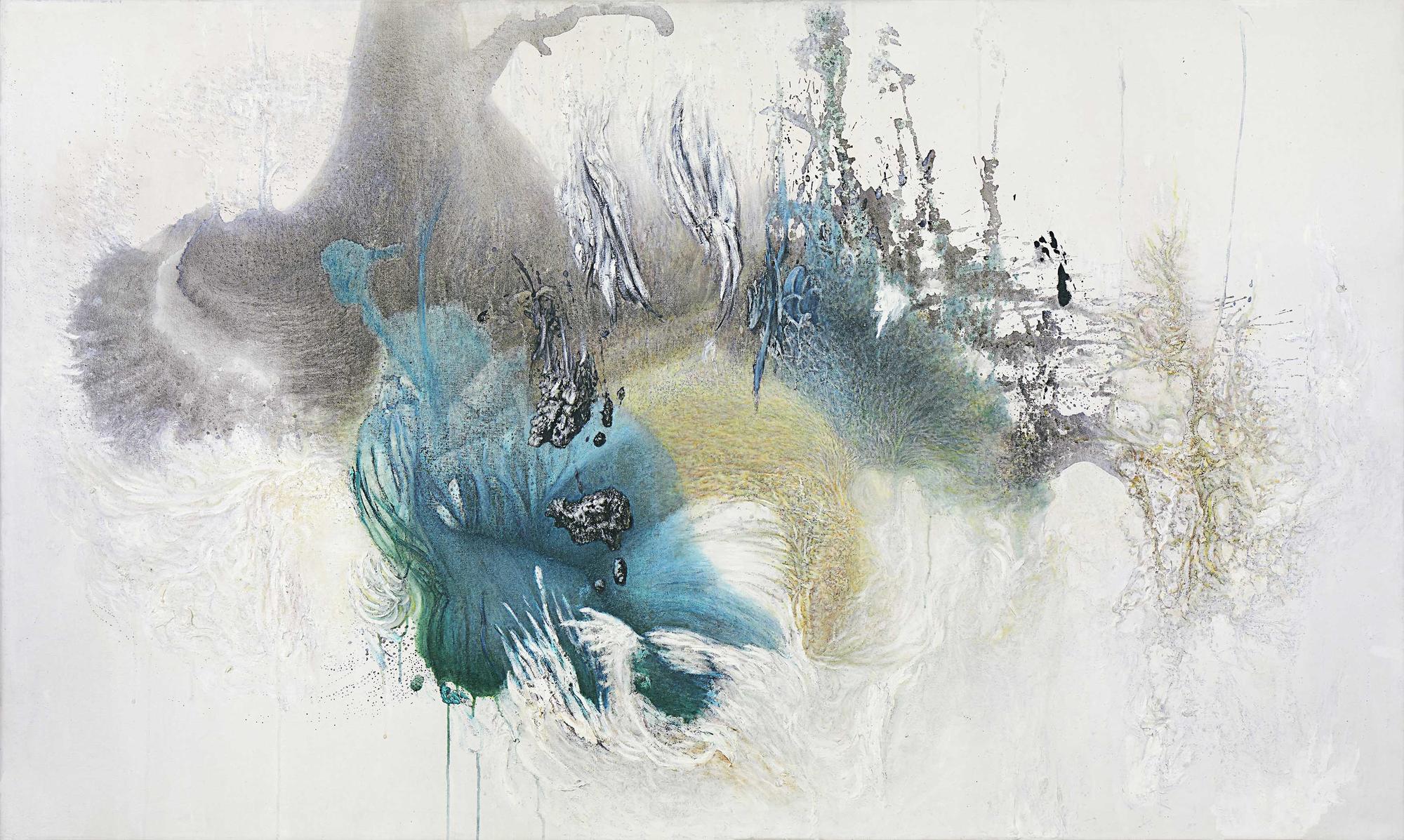
Shen Wei, Suspension in Blue Number 2, 2017-2020
Oil and acrylic on canvas
35 ¾ x 59 ¾ in. (91 x 152 cm)
Photo: Inès Leroy Galan
© Shen Wei
Reflecting Elements Series
With this series, Shen Wei returned to large-scale paintings and experimented for the first time with placing his canvases side-to-side to form a multipanel sequence, called a polyptych, which recalls the format of medieval and Renaissance altarpieces. One additional painting is horizontal. The artist executed this series while reading the most famous literary work of medieval Europe, Dante Alighieri’s Divine Comedy (a work that also inspired Isabella Stewart Gardner). Dante’s epic poem traces the soul’s journey through ascending levels of the cosmos: Hell, Purgatory, and Paradise. Shen Wei’s sepia-toned imagery—achieved by exploiting the fluid properties of oil as a pigment—seems almost to emerge from the surface of the canvas and suggests the sublime power and transformation of natural elements such as water, earth, and sky.
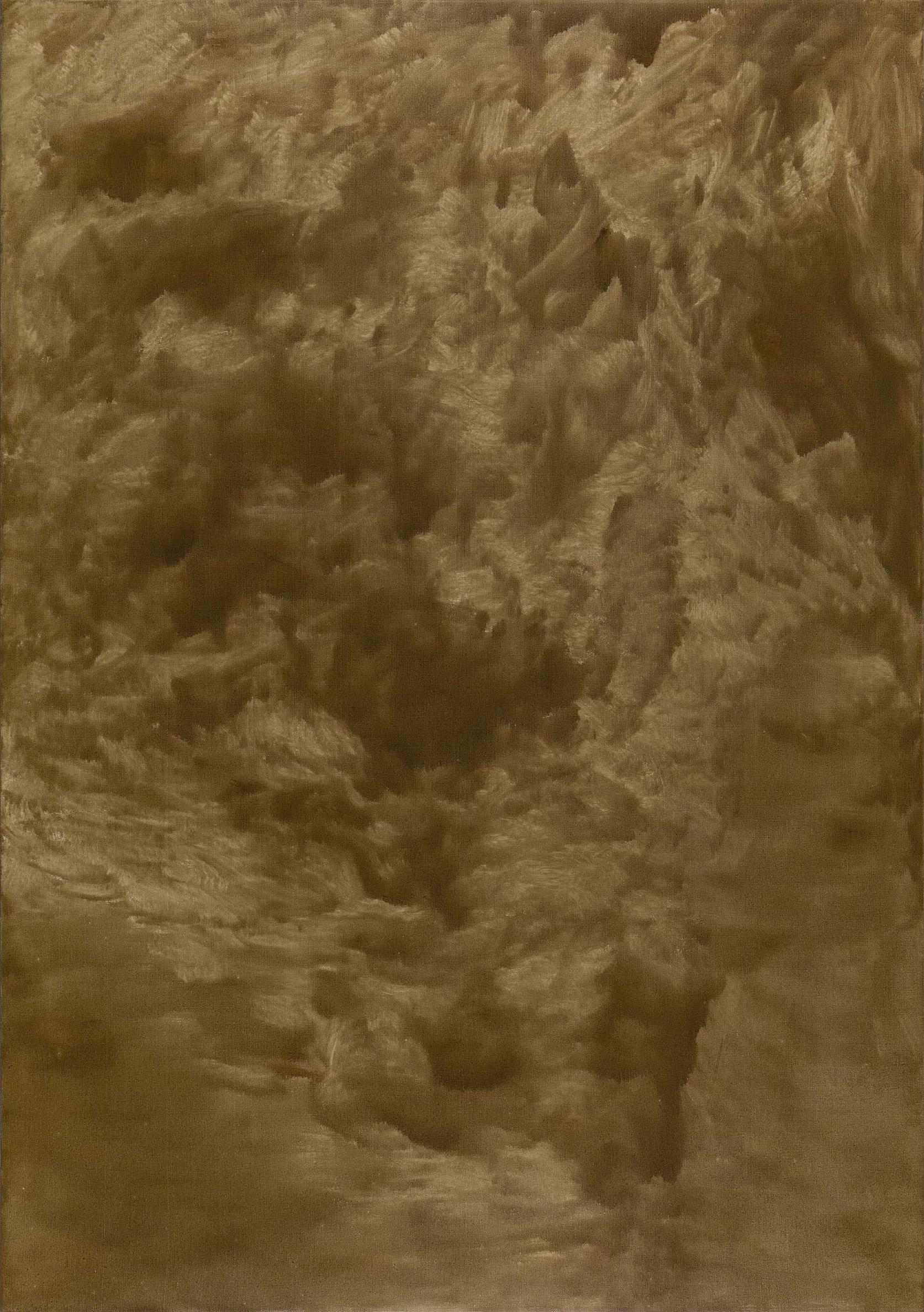
Shen Wei, Reflecting Elements Number 1, 2019
Oil on linen
63 ¾ x 44 ⅝ in. (162 x 113.5 cm)
Photo: Inès Leroy Galan
© Shen Wei
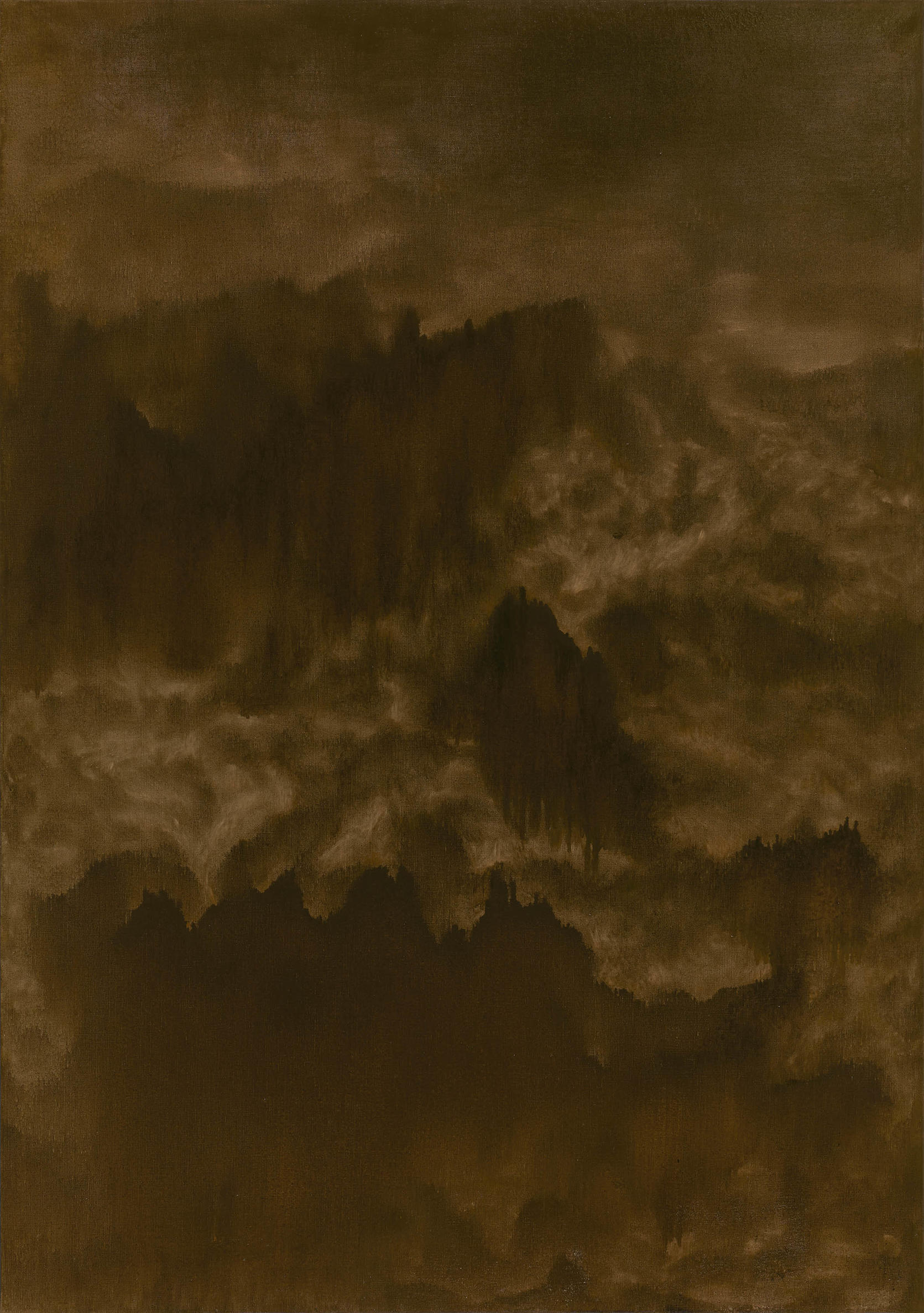
Shen Wei, Reflecting Elements Number 2, 2019
Oil on linen
63 ¾ x 44 ⅝ in. (162 x 113.5 cm)
Photo: Inès Leroy Galan
© Shen Wei
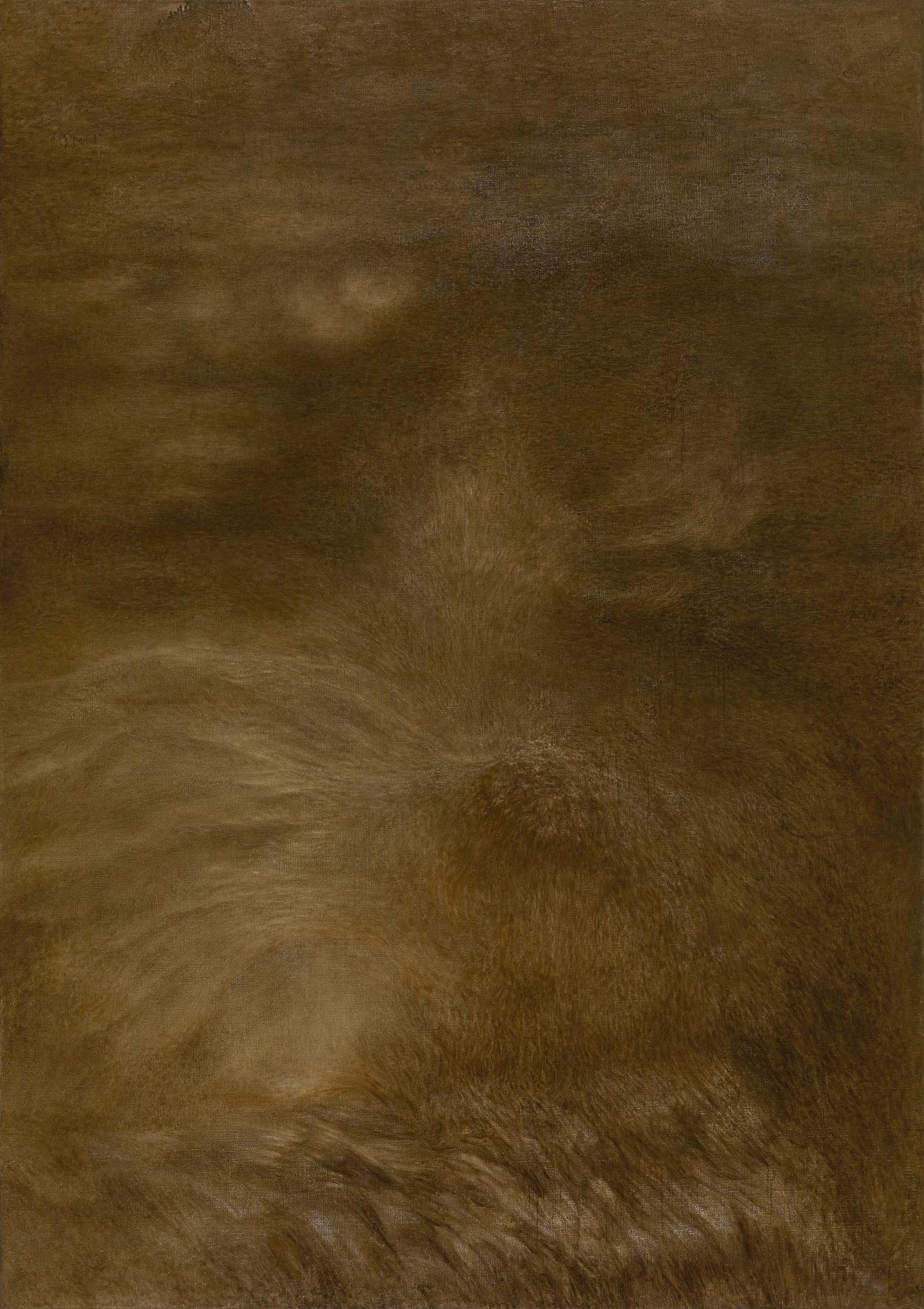
Shen Wei, Reflecting Elements Number 3, 2019-2020
Oil on linen
63 ¾ x 44 ⅝ in. (162 x 113.5 cm)
Photo: Inès Leroy Galan
© Shen Wei
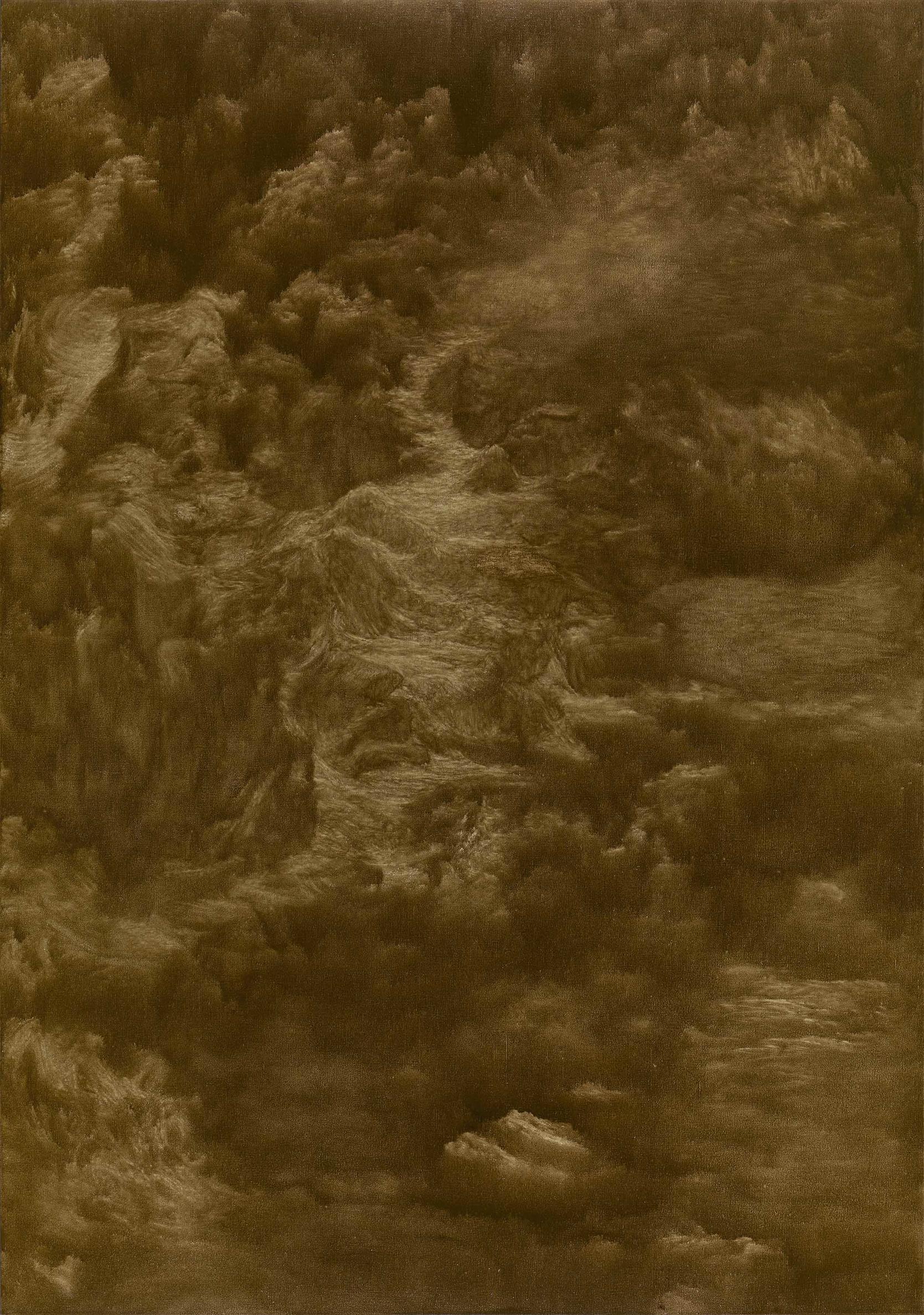
Shen Wei, Reflecting Elements Number 4, 2019
Oil on linen
63 ¾ x 44 ⅝ in. (162 x 113.5 cm)
Photo: Inès Leroy Galan
© Shen Wei
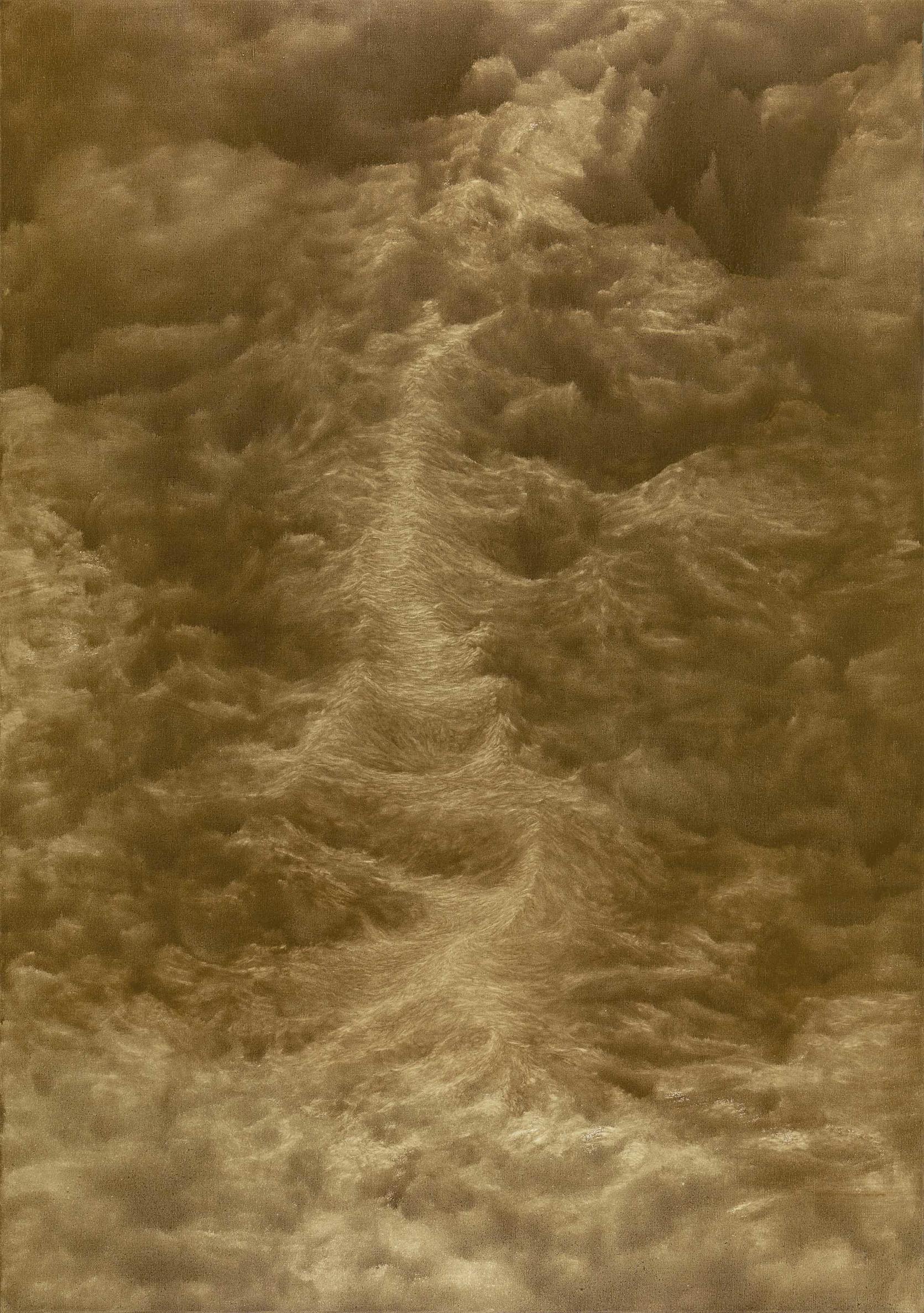
Shen Wei, Reflecting Elements Number 5, 2019
Oil on linen
63 ¾ x 44 ⅝ in. (162 x 113.5 cm)
Photo: Inès Leroy Galan
© Shen Wei
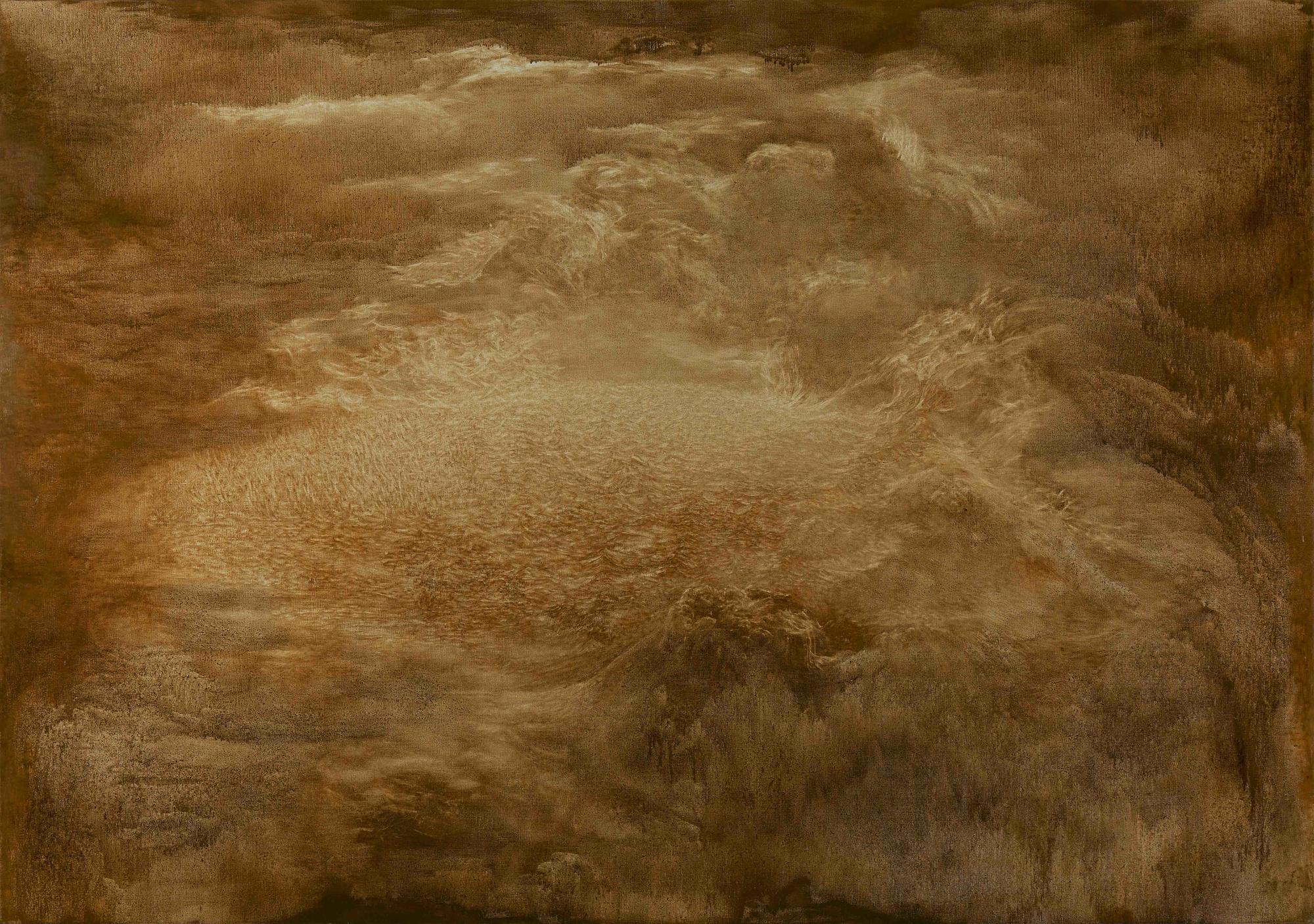
Shen Wei, Reflecting Elements Number 6, 2019
Oli on linen
44 ⅝ x 63 ¾ in (113.5 x 162 cm)
Photo: Inès Leroy Galan
© Shen Wei
About the Artist—Shen Wei
(b. 1968 Hunan Province, China)
Choreographer, painter, dancer, and director, Shen Wei is widely recognized for his ground-breaking movement-based performances that incorporate elements from theater, Chinese opera, as well as traditional and contemporary visual arts. At twenty-three, he became a founding member of the Guangdong Modern Dance Company, the first of its kind in China. In 2000, after moving to New York City, he formed Shen Wei Dance Arts and performed in premier festivals on five continents.
Admiration for his talent has earned Shen Wei numerous awards, including a MacArthur Fellowship (2007) and the Samuel H. Scripps Award for Lifetime Achievement from the American Dance Festival (2020). He has been awarded multiple residencies and commissions from a range of organizations, including the Kennedy Center for the Performing Arts in Washington, D.C., and Lincoln Center and the Park Avenue Armory in New York City; in 2008, he choreographed the opening ceremony for the Beijing Summer Olympics. Throughout his career, Shen Wei has continued to paint and explore the medium of film and video. Recently, his work as a visual artist and choreographer has entered a new phase with a series of performative installations and site-specific works.
Explore the full exhibition:
Shen Wei: Painting in Motion is supported by the E. Rhodes and Leona B. Carpenter Foundation and members of the Friends of Fenway Court Patron Program. Support for Shen Wei's Residency and the Artist-in-Residence program has been provided by The Andrew W. Mellon Foundation, the National Endowment for the Arts, and the Barbara Lee Program Fund. Community programs created in partnership with the Pao Arts Center and Chinese Folk Art Workshop are made possible by the National Endowment for the Arts and Barr Foundation ArtsAmplified initiative. The Museum receives operating support from the Massachusetts Cultural Council.
Media sponsor: WBUR
